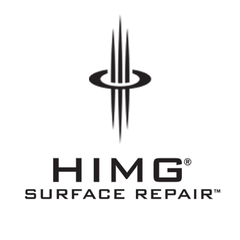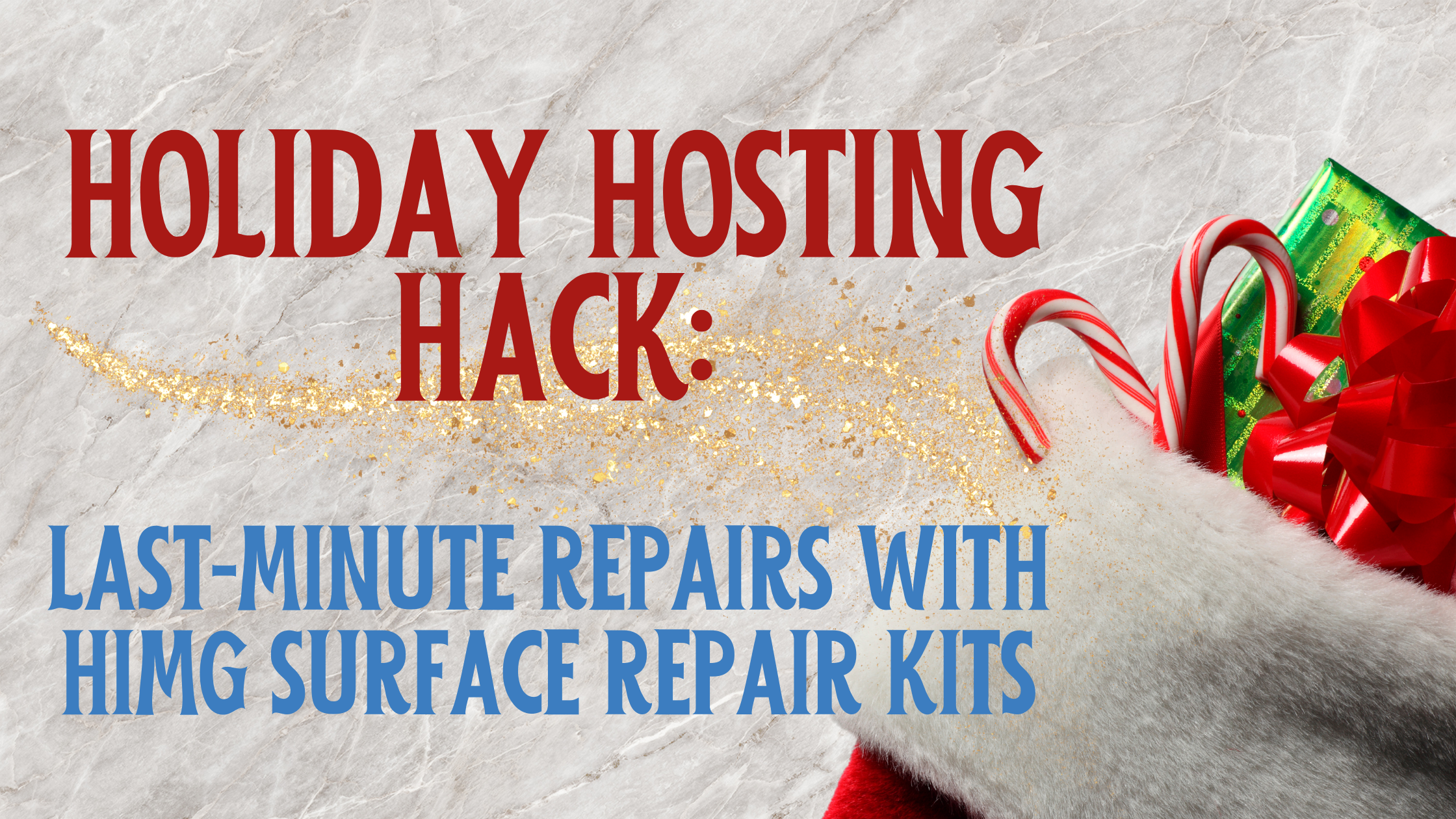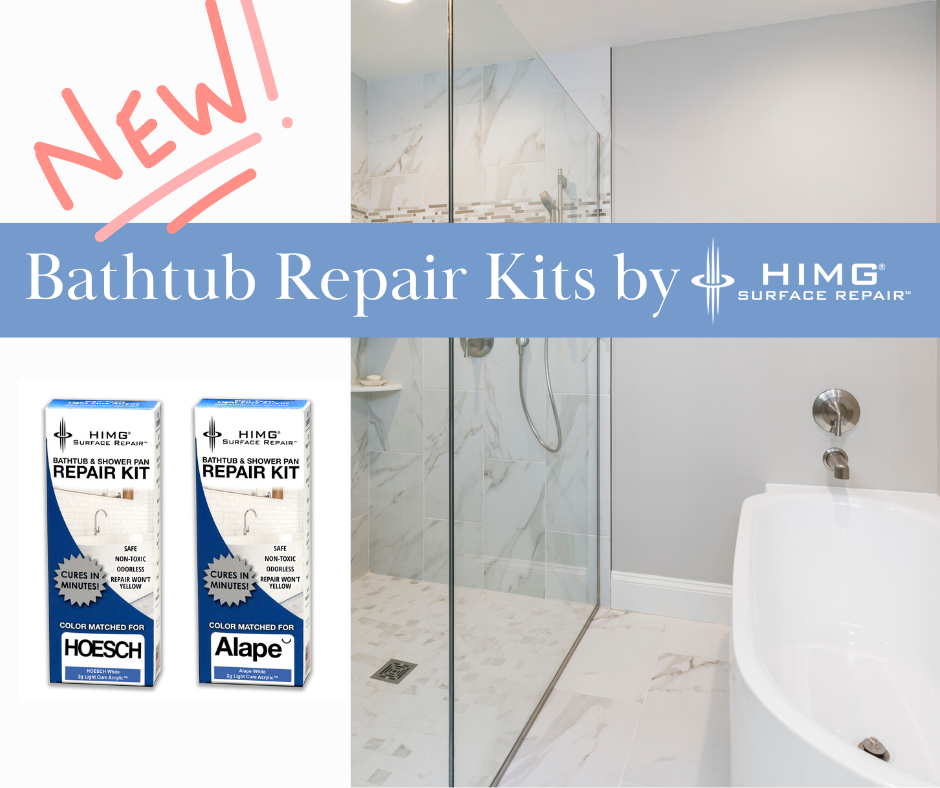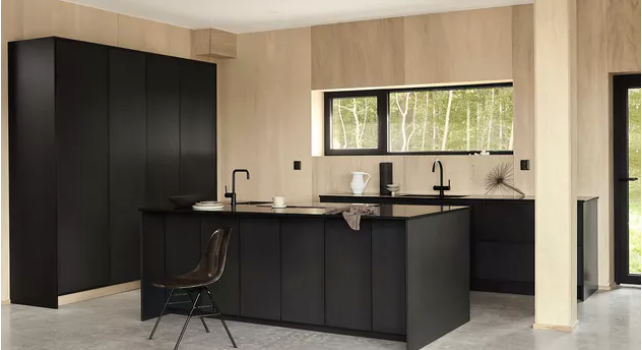Our favorite bathtubs and showers are made of Fiberglass or Acrylic.
Cast-iron and ceramic are also less expensive options and among the favorite ones that you can find in almost every bathroom. However, it is important to remember, that even these materials will not last forever.
Over time you may see some nicks, chips, cracks, and small holes on your bathroom / shower acrylic or fiberglass surface.
Whether it is a bathtub, shower stall, or combination bathtub/shower surround, the process for minor repairs is the same.
The rule of thumb is that if the hole is smaller than a quarter, you should be able to make the repairs yourself.
There are several DIY epoxy products on the market that can help you patch holes fill cracks and cover up blemishes in your bathroom but we at HIMG®, believe that people should be able to make small surface repairs themselves, without any toxic side effects getting in the way.
The benefits of the Light Cure Acrylic Material are above and beyond any epoxy.
LCA™ Kits are:
- Non-toxic
- Non hazardous
- No ventilation required to do the repair
- No safety measures to be taken
- Short and fast repair time
- Won't discolor overtime
Our LCA™ (Light Cure Acrylic) Surface Repair material is made of high-tech, nano acrylic, it withstands moisture, cleansers, and heat up to 285°F. It is completely safe for home surfaces.
Our DIY Surface Repair Kits can be used by anyone to restore the chipped fiberglass and acrylic shower damage in minutes.
If your shower is made from any of these manufactures as Kohler, Toto, Villeroy & Boch and American Standard we have launched a new line of bathtub and shower pan products that perfectly matches the color of your toilet, sink, shower, and bathtub.
Simply follow the step by step detailed instructions you will find inside the pack and we can guarantee the results.
Step 1 Prepare the surface
Step 2 Apply Light Cure Acrylic
Step 3 Add Curing Strip
Step 4 Cure with LED light
Step 5 Remove curing strip
Step 6 Sand
Step 7 Polish
1. Prepare the shower Surface Clean the defect and around the area so that it is free from dust and dirt. Make sure your shower is completely dry before proceeding to step 2.
2. Apply Light Cure Acrylic Light Cure Acrylic is an effective repair material for nicks, gouges, chips, and scratches in fiberglass and acrylics as well as for marble, porcelain, corian, travertine and other natural stone surfaces.
Place an applicator tip on the Light Cure Acrylic™ syringe and apply a small amount of repair acrylic in the fiberglass of acrylics defect. For best results, DO NOT OVERFILL. A perfectly filled and cured repair will not require sanding or polishing. We suggest that you make repairs in small sections, no larger than 1/4” or 6mm. Deeper damages will require curing in layers. Additional colors of Light Cure Acrylic™ repair material can be purchased for color blending applications.
3. Add Curing Strip Place a curing strip on top of the uncured Light Cure Acrylic. Using a small wooden stick, gently touch the top of the curing strip to help push the repair material into the damage. If your damage is larger than a curing strip, you can use clear packing tape, folded sticky side to sticky side. Packing tape is also helpful when repairing an edge, used as a retaining wall to hold the repair material in place.
4. Cure with LED light Focus the blue light just above the curing strip. The Light Cure Acrylic will not cure on its own. Exposure duration will depend on the size of the damage, but it is safe to start with 5-7 minutes. Before removing the curing strip, use the wooden stick to test for hardness. Additional LED exposure may be needed, especially for larger damages. We recommend focusing the LED light in different sections of the damage.
5. Remove the Curing Strip Remove the curing strip and verify for a complete cure. If the repair remains tacky after additional LED exposure, you may use rubbing alcohol to gently wipe the repaired surface.
6. Sand Use yellow 220 grit sandpaper to remove any over filled material. Rub in gentle circles. For increased shine, use grey 2000 grit wet sanding paper with a dab of water. Be extremely careful when sanding softer surfaces as hazing or scratching may occur if you are too aggressive. For best results, sand the repaired area to make it level with the surrounding fiberglass/ acrylic material.
7. Polish Gently apply a few drops of polishing paste on the repaired area to wipe away dust while polishing the repaired granite for maximum shine.
You can now restore and extend the life of your shower /tub or bathtub easily with our amazing do-it -yourself light cure acrylic kits.
Happy Repairing DIY'ers





